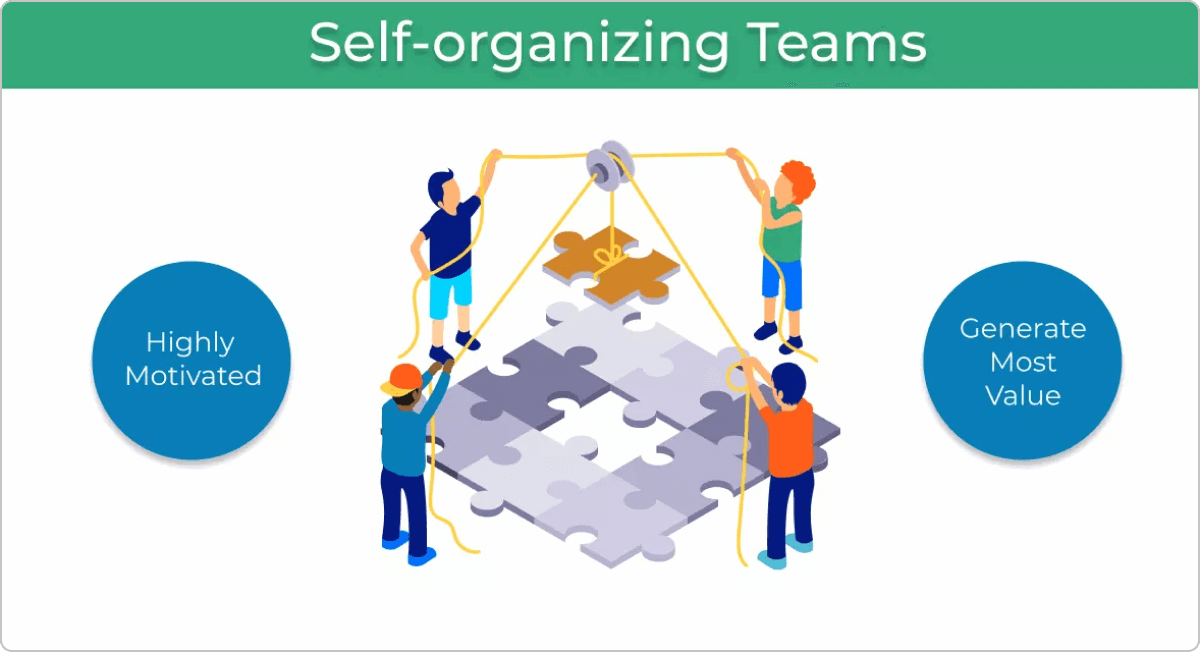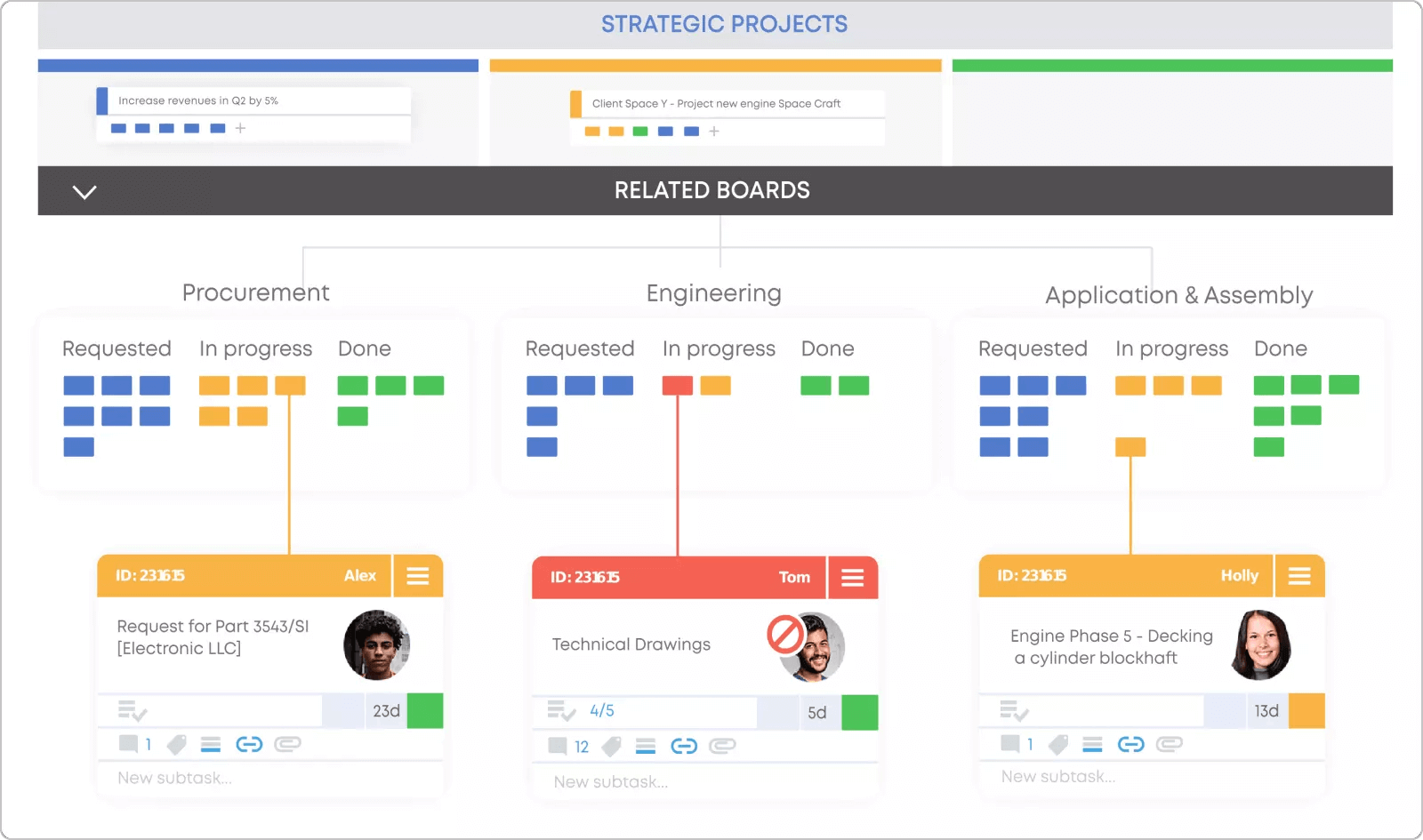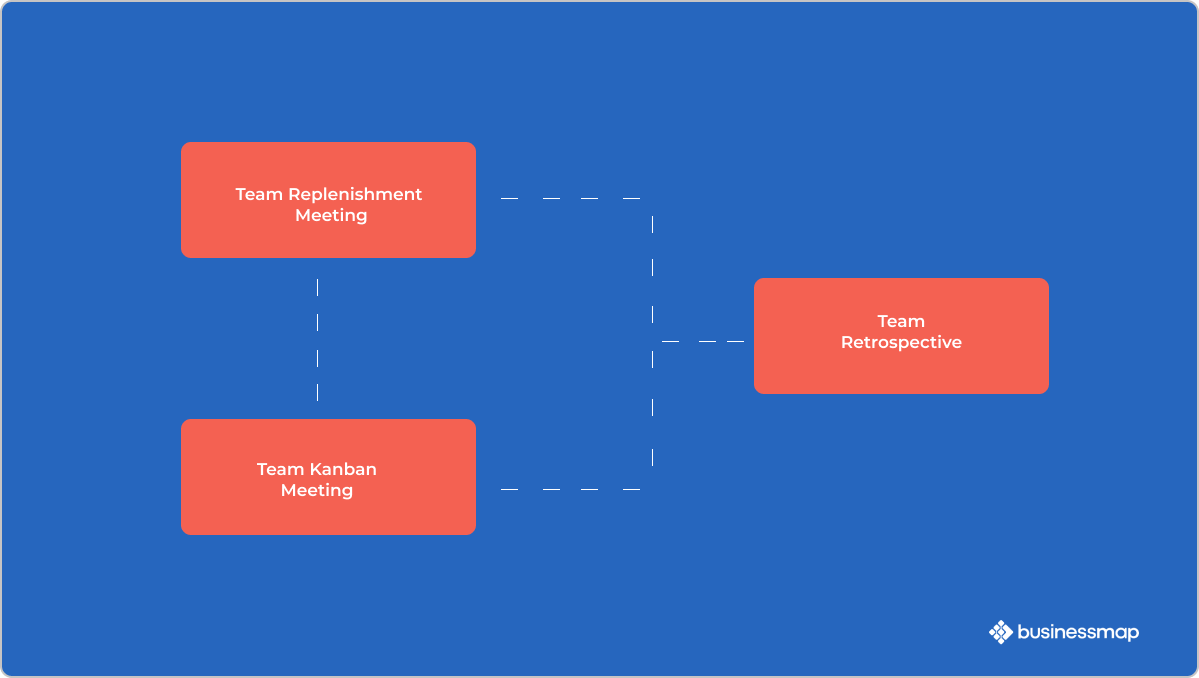The terms Agile and Waterfall are widely known as embodiments of modern and traditional project management. Agile, on the one hand, represents the new-age approach to project management which emerged out of a necessity to address the dynamics of the customers’ expectations and keep up with the hectic software development market. Waterfall, on the other hand, is one of the most popular traditional project management ways.
Let’s uncover the most underlined differences between the two approaches, how they can both support your projects, and which one should suit you best.
Agile vs. Waterfall: In Brief
Agile is a philosophy for achieving business agility based on the 12 principles rooted in the Agile Manifesto to software development created in 2001. At its core, Agile thinking promotes flexibility and adaptability to changes emerging along the process of creating value. As an iterative, client-oriented process, Agile encourages teams to work on different phases of a project simultaneously and promotes constant exchange of feedback during the process. This allows them to react quickly to any changes and deliver high-quality products to their customers faster.
 Agile Manifesto values
Agile Manifesto values
Waterfall, on the other hand, is a linear model for product development with strict planning and step-by-step plan execution at its heart. It was applied originally in the construction and manufacturing fields for managing highly structured physical projects. The phases of the Waterfall model include initiation (requirements collection), analysis, design, construction (development), testing, deployment, and maintenance.
While Agile originated in the software development domain and Waterfall in manufacturing, both are nowadays employed for managing knowledge work in multiple industry fields. Agile teams are more reactive to changes along the project lifecycle, whereas Waterfall is suitable for projects where the requirements are well-defined, and a clear plan is devised.
 Agile vs. sequential work management
Agile vs. sequential work management
6 Key Traits Defining Agile and Waterfall Project Management
1. Customer Involvement in Agile and Waterfall Projects
Customer satisfaction was defined as the very first Agile principle outlined in the Agile Manifesto. To meet customers’ expectations, Agile projects rely heavily on clients’ availability during the entire process. While customers’ input is the driving force of progress in Agile project management, the Waterfall product development requires customers’ feedback in just a couple of instances. First, feedback is required at the initial stage when requirements are assembled, and work hasn’t started yet. The other instance is towards the end of a project when a big piece of work is completed (such as a product release).
2. Requirements Changes in Agile vs. Waterfall
The Initiation phase of the Waterfall model to project management includes gathering and documenting the project requirements. The outcome of this stage is a well-defined project requirements list that serves as input for the next phase of the project cycle. An Agile project, on the other hand, welcomes changing customers’ expectations or market fluctuations and aims to accommodate such alterations along the way in a constructive manner.
3. Scope in Agile vs. Waterfall
Similar to the changing requirements, Agile project management is flexible about project scope changes. To respond to such changes, Agile teams keep a steady pace of frequent delivery to the market and rely on timely feedback. However, when dealing with well-defined projects and strict compliance requirements, the Waterfall approach can be quite beneficial. Once the scope of work is identified, the planning, design, and tracking of the work progress are much easier.
4. Work Prioritization in Agile and Waterfall
The flexibility of Agile project management ensures that all work is dedicated to a single priority – to “satisfy customers through early and continuous delivery,”. As such, work reprioritization happens on the basis of customers’ feedback. This way, Agile project leaders' and team members’ efforts are focused on creating and delivering value at all times. The Waterfall approach, however, aims to deliver what was defined as a project scope before the work started. The prescriptive model can increase the risk of project failure or inability to cope with changing demands due to the team’s commitment to the defined scope.
5. Agile Teams vs. Waterfall Teams
Agile teams face uncertainty with an adaptive attitude and respond to changes at every iteration. Agile team members are trusted to self-organize their work in the most optimal way and have a wide-open mind toward feedback which increases their accountability and ownership. As opposed to Waterfall teams that focus on personal performance, the Agile culture highlights how work flows through the work system and analyzes it. Teams applying the Waterfall approach, on the other hand, are focused on their part of the work. A team member can only be engaged in the project scope definition or design phase, which limits team collaboration and synchronization.
 Key characteristics of self-organizing Agile teams
Key characteristics of self-organizing Agile teams
6. Planning in Agile vs. Waterfall
Waterfall projects take the traditional project management approach to planning, where fixed dates and fixed scope are the main drivers of progress. In contrast, planning in Agile project management remains flexible and adaptive to changes. While the step-by-step heavy planning can be beneficial to projects with a well-known scope, in the knowledge work domain, critical changes can emerge and will be addressed even at a later stage of the Agile project's advancement.
 Traditional vs. Agile planning process
Traditional vs. Agile planning process
Benefits of Agile and Waterfall Methodologies
While both Agile and Waterfall aim at improving the way work is done, they support that mission differently. Let’s discuss what the benefits of Agile and Waterfall are, and in what scenarios Agile works better than Waterfall and vice versa.
What Are the Benefits of Agile?
The emphasis that the Agile philosophy highlights is creating value that always meets the customers’ expectations. Furthermore, the Agile mindset promotes doing business in the most optimal way. In other words, to deliver value with great quality and improve customer satisfaction while keeping the team motivated and engaged.
-
Agility. A true Agile adoption can help organizations improve their ability to respond to changes in a timely manner, resulting in faster market delivery. The greatest outcome of the Agile mindset is the behavioral shift from focusing on delivering output to creating real value for the customer (outcome).
-
Improved Efficiency. A common trait of the different Agile methodologies is the constant dynamics and motion of things, plans, requirements, etc. Nothing remains static or final, so being efficient is critical to today’s projects' success. One way Agile helps to meet all those market variations is by utilizing people’s skills in the most optimal manner instead of seeking maximum capacity utilization, which may lead to burnout.
-
Innovation. At the heart of Agile lies the drive to change and improve along with the world around us, including the changing demands of customers, the pace of technology blooming, competitors' market growth, etc. Agile encourages constant experimentation and building feedback flow through regular ceremonies as the path to improvement.
-
Accountability. Team members and leaders alike are encouraged to organize their work on their own. The Agile approach to work management enhances not only everyone’s ownership of the work assignments but also team morale and the sense of belonging to a greater cause.
What Are the Downsides of Agile Project Management?
- Dependencies between team members may not be as clearly established as in the Waterfall.
- Adopting the Agile mindset requires dedication from everyone.
- Project timeline can be hard to determine.
What Are the Benefits of Waterfall?
Breaking down projects into a linear sequence of phases makes the Waterfall model one of the most structured approaches to work management. The work progress flows in one direction only, which ensures that expensive design changes, for instance, can be avoided altogether.
-
Inspection. When dealing with projects with a well-known scope, the requirement specifications gathered in the initial phase are thoroughly inspected, reducing the chances of emerging malfunctions later. The practice of requirements clarification of the Waterfall model can result in reduced costs and time-saving while the project develops.
-
Structure. Another advantage of the Waterfall framework is its detailed organization and structured approach at every project phase. A large Waterfall project, for instance, usually includes a detailed list of controls and procedures to ensure that work under that phase is indeed completed and its output would be further utilized in the next stage.
-
Documentation. The Waterfall model highlights keeping diligent track of all documentation about the work progress at each step. The practice ensures knowledge is preserved as well as facilitates the onboarding of new members of the team.
What Are the Downsides of Waterfall?
-
Projects dealing with intangible products or services are prone to slower market delivery due to the linear sequential order of the Waterfall management process.
-
Waterfall requires a complete definition of scope and specifications from the very start, which poses a threat for more volatile projects.
-
The strict planning of each process step limits the flexibility to make changes without disrupting the rest of the process phases.
-
Changes in customer requirements often call for redesign, redevelopment, or further testing, which results in increased costs.
-
Issues can cause significant delays, as earlier work may need to be reworked.
When to Use Agile and Waterfall?
Agile Applications
The Agile way of managing projects, programs, portfolios, or other pieces of work finds application in multiple business fields. It is better suited for projects where management is closely involved while work progresses. Rooted in the software development industry, today, Agile fits well in every niche where knowledge work is involved. Some examples include:
Waterfall Applications
The Waterfall framework can be useful in physical environments where structural integrity is critical. As such, the linear approach is beneficial for planning large construction or manufacturing projects. Waterfall is suitable for projects that must comply with strict regulations and requirements where flexibility is limited. Its application to managing creative work led to the emergence of modified Waterfall models that address some issues with the “pure” Waterfall approach.
- Construction
- Manufacturing
- Government Projects
How to Embed Agility in a Waterfall Process with Kanban?
Even if you still use a highly structured work model, enabling agility in sequential processes like Waterfall is not impossible. Adaptive methods such as Kanban can help you with that mission by putting an emphasis on your current work and improving it in an undisruptive way.
Even if you are still using a highly structured work model, it is not impossible to enable agility in sequential processes like Waterfall.
1. Map Your Work Process Steps to Visualize All Work.
The first step of that journey is to visualize your current work process by mapping all the process steps of your workflow. A Kanban board can help you visualize your work environment and how work flows in reality. It can guide you to uncover where work gets blocked or what creates waste, regardless of whether you apply Agile or Waterfall processes.
Furthermore, advanced Kanban boards allow you to connect various value streams, such as the work activities of different teams or departments, into a single hub and create a network of services. Thanks to this birds-eye view into your process and its connectedness, you will achieve greater transparency across the entire network.
 Connected Kanban boards
Connected Kanban boards
2. Introduce Work in Progress Limits to Improve Focus.
Next, you need to start optimizing the created map of services. To do so, Kanban practices such as limiting the work in progress can help reduce multitasking and increase focus on the work at hand. As a result, you will increase your team's productivity and deliver customer value faster.
 WIP limits on a Kanban board
WIP limits on a Kanban board
3. Define Metrics to Monitor Progress.
Once you create a system for work, it will gradually become easier to monitor how work is done. Analyzing your processes, however, will allow you to spot any process roadblocks, understand how your team is performing and identify areas for improvement. Thanks to the wide range of Kanban metrics, you can optimize your work delivery process and improve your workflow efficiency.
4. Create Feedback-Sharing Opportunities.
Encouraging sharing feedback is a cornerstone in the path toward true business agility. Aim at establishing feedback opportunities for everyone involved in a project’s progress. Implementing feedback loops, for instance, is one of the main Kanban practices that ensures synchronization and helps build an information flow. Creating such opportunities will lay the foundation of true organizational agility.
 Team-level feedback loops in Kanban
Team-level feedback loops in Kanban
The Agile vs. Waterfall Model – Which One to Choose?
Despite each approach's pros and cons, your decision on what method will work best for your projects strongly depends on the nature of your processes and business. Moreover, another key aspect to consider is various internal and external factors that affect the course of work of your teams and organization.
As two of the most famous approaches for project management, Agile and Waterfall are often subject to many discussions and comparisons when it comes to choosing the better one. Even though both of them are widely used not only in software development, they have their differences. The main one is the way projects are organized and managed.
Agile is a more flexible and innovative approach focusing on building information flow and quickly addressing clients’ changing requirements. Waterfall, on the contrary, is more of a traditional way of managing work. It requires upfront planning and a structured work process with a heavy dependency between each process step.
We offer the most flexible software platform
for outcome-driven enterprise agility.
In Summary
To understand why Agile is more beneficial than Waterfall, let’s make a head-to-head comparison:
- Agile promotes flexibility to emerging changes even at a later phase, while Waterfall relies on defined scope and requirements in the initial stages of a project.
- The Agile mindset calls for constant experimentation and a drive to improve, while the Waterfall model is a structured approach with an emphasis on documentation and following procedures.
- Agile team members are encouraged to collaborate and self-organize, while Waterfall followers have a defined scope of work in a specific phase.





 Agile Manifesto values
Agile Manifesto values  Agile vs. sequential work management
Agile vs. sequential work management  Key characteristics of self-organizing Agile teams
Key characteristics of self-organizing Agile teams Traditional vs. Agile planning process
Traditional vs. Agile planning process Connected Kanban boards
Connected Kanban boards WIP limits on a Kanban board
WIP limits on a Kanban board Team-level feedback loops in Kanban
Team-level feedback loops in Kanban

